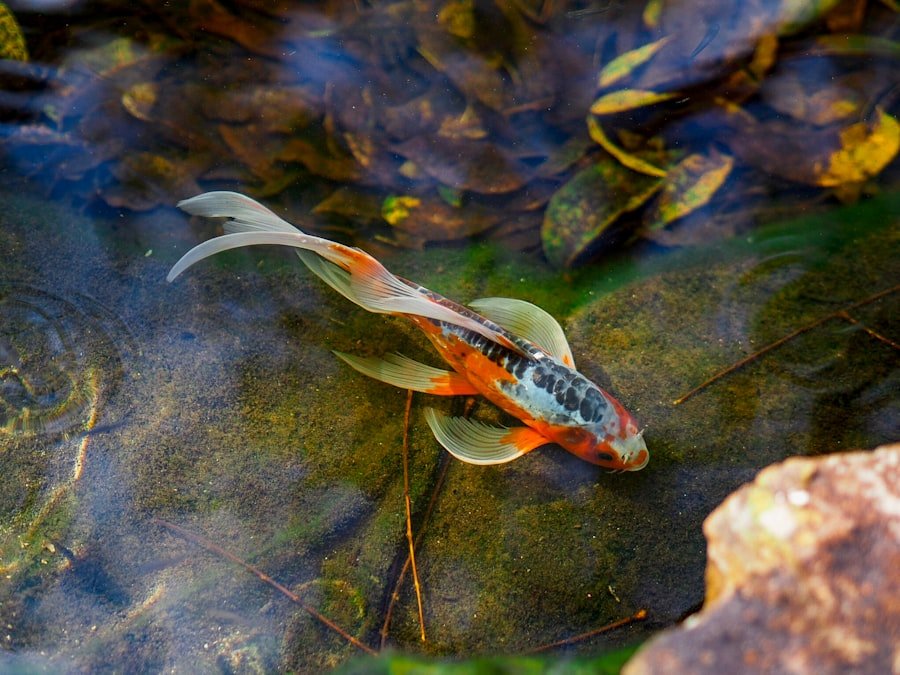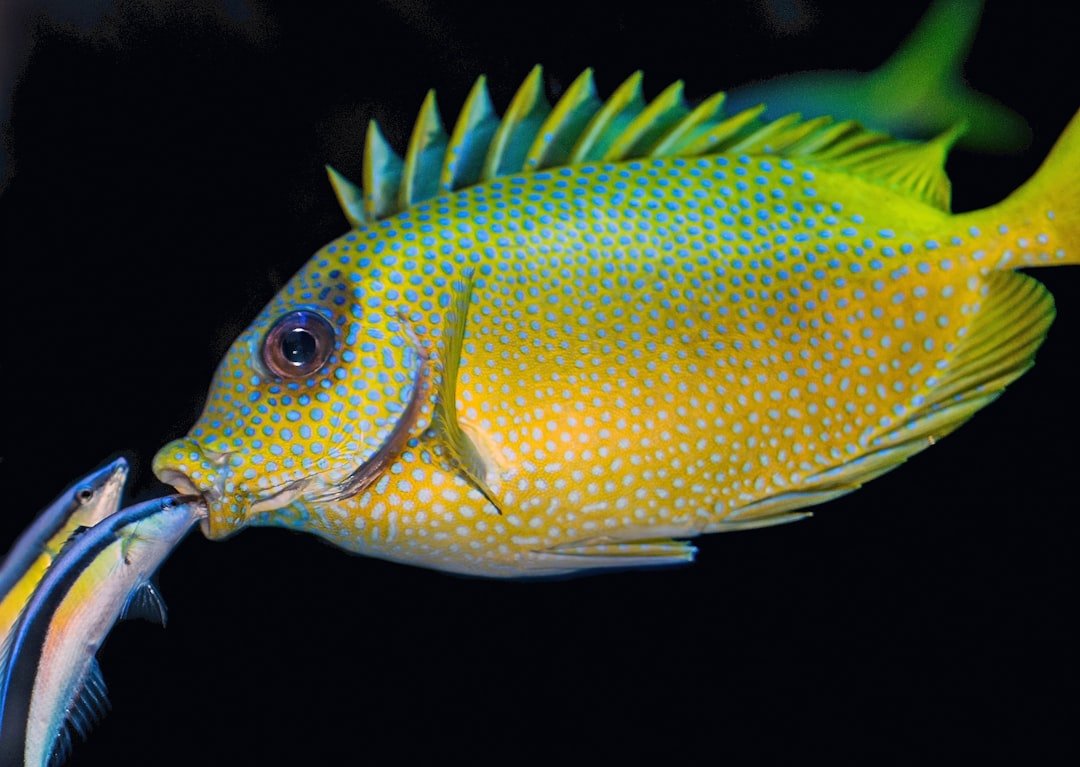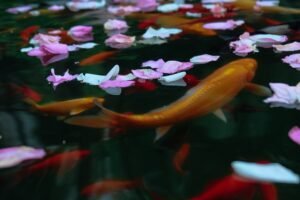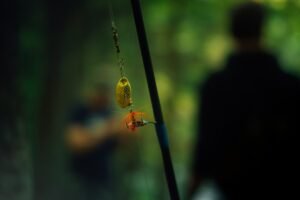Fish hatcheries are facilities where fish eggs are hatched and raised in controlled environments before being released into the wild or harvested for consumption. These facilities play a crucial role in supporting sustainable aquaculture by ensuring the availability of fish stocks for both commercial and recreational purposes.
The importance of fish hatcheries for sustainable aquaculture cannot be overstated. With the increasing demand for seafood and the decline of wild fish populations due to overfishing and habitat destruction, fish hatcheries provide a means to replenish and maintain fish stocks. By carefully managing the breeding, hatching, and rearing of fish, hatcheries can help prevent the depletion of wild populations and ensure a steady supply of fish for future generations.
Key Takeaways
- Fish hatcheries are important for sustainable aquaculture as they provide a controlled environment for fish breeding and rearing.
- Fish hatcheries have a long history, with ancient practices evolving into modern techniques that support wild fish populations.
- Sustainable aquaculture has environmental and economic benefits, including reducing pressure on wild fish stocks and creating jobs.
- There are different types of fish hatcheries, including public and private, freshwater and marine, each with their own unique challenges.
- The science of fish hatcheries involves genetics, nutrition, and disease prevention, and innovations in technology are helping to address challenges such as overcrowding and pollution.
The History of Fish Hatcheries: From Ancient Practices to Modern Techniques
The practice of fish hatcheries dates back thousands of years. Ancient civilizations such as the Egyptians, Romans, and Chinese were known to artificially breed fish in ponds and tanks. These early hatchery practices were rudimentary compared to modern techniques but laid the foundation for the development of more advanced methods.
The evolution of fish hatcheries can be attributed to advancements in technology and scientific understanding. In the 19th century, European countries began experimenting with artificial fertilization of fish eggs, leading to the establishment of the first modern fish hatcheries. These early hatcheries focused on salmon and trout species, which were highly valued for their commercial and recreational value.
Today, fish hatcheries utilize a range of modern techniques to maximize production efficiency and ensure the health and survival of fish. These techniques include controlled breeding programs, advanced water filtration systems, and specialized diets tailored to the nutritional needs of different species. The use of technology such as genetic testing and disease monitoring has also become commonplace in modern hatcheries.
The Role of Fish Hatcheries in Supporting Wild Fish Populations
Fish hatcheries play a crucial role in supporting wild fish populations by supplementing natural reproduction and replenishing depleted stocks. This is particularly important for species that are highly valued for commercial or recreational purposes, such as salmon, trout, and bass.
One example of a successful fish hatchery program is the Pacific Salmon Commission’s Hatchery Reform Project. This initiative aims to improve the effectiveness and sustainability of salmon hatcheries in the Pacific Northwest. By implementing best practices in hatchery management, such as reducing the genetic impact on wild populations and minimizing disease transmission, the project has helped to restore and maintain healthy salmon populations in the region.
Another example is the Florida Fish and Wildlife Conservation Commission’s Stock Enhancement Research Facility. This facility focuses on enhancing populations of economically important fish species, such as red drum and spotted seatrout. By rearing and releasing juvenile fish into the wild, the facility helps to support recreational fishing opportunities and maintain healthy fish populations in Florida’s coastal waters.
The Benefits of Sustainable Aquaculture: Environmental and Economic Impacts
| Benefits of Sustainable Aquaculture | Environmental Impacts | Economic Impacts |
|---|---|---|
| Reduced Overfishing | Preserves wild fish populations | Increases supply of fish for consumption |
| Efficient Use of Resources | Reduces waste and pollution | Increases profitability for farmers |
| Improved Water Quality | Reduces nutrient pollution and eutrophication | Increases demand for sustainably produced seafood |
| Conservation of Biodiversity | Protects habitats and ecosystems | Creates jobs and economic growth in coastal communities |
Sustainable aquaculture, supported by fish hatcheries, offers numerous benefits both for the environment and the economy.
From an environmental perspective, sustainable aquaculture can help reduce pressure on wild fish populations by providing an alternative source of seafood. By cultivating fish in controlled environments, hatcheries can minimize the negative impacts associated with traditional fishing methods, such as bycatch and habitat destruction. Additionally, sustainable aquaculture can help protect sensitive ecosystems by reducing the need for wild fish capture.
Economically, sustainable aquaculture has the potential to create jobs and stimulate local economies. Fish hatcheries provide employment opportunities in rural areas where traditional industries may be declining. Furthermore, sustainable aquaculture can contribute to food security by providing a reliable source of protein for communities that rely on fishing as a primary food source.
Types of Fish Hatcheries: From Public to Private, Freshwater to Marine
Fish hatcheries can be categorized based on ownership and the type of water they operate in.
Public fish hatcheries are owned and operated by government agencies or non-profit organizations. These hatcheries are typically funded through public funds and focus on conservation and restoration efforts. Public hatcheries often work closely with research institutions and universities to study fish populations and develop best practices for hatchery management.
Private fish hatcheries, on the other hand, are owned by individuals or companies and operate for commercial purposes. These hatcheries produce fish for sale to the aquaculture industry, recreational fishing, or stocking programs. Private hatcheries often invest in advanced technologies and specialized breeding programs to maximize production efficiency and meet market demands.
Fish hatcheries can also be classified based on the type of water they operate in. Freshwater hatcheries focus on species that inhabit rivers, lakes, and ponds, such as trout, bass, and catfish. These hatcheries often have specialized facilities for rearing fish in freshwater environments and may include raceways, ponds, or recirculating aquaculture systems.
Marine hatcheries, on the other hand, rear fish species that inhabit saltwater environments, such as salmon, halibut, and shrimp. These hatcheries require specialized facilities that can mimic the conditions of the ocean, including seawater filtration systems and temperature control mechanisms.
The Science of Fish Hatcheries: Genetics, Nutrition, and Disease Prevention

The success of fish hatcheries relies on a deep understanding of genetics, nutrition requirements, and disease prevention.
Genetics plays a crucial role in fish hatcheries as it determines the traits and characteristics of the offspring. Hatchery managers carefully select breeding pairs based on desired traits such as growth rate, disease resistance, and tolerance to environmental conditions. Genetic testing is often used to ensure the genetic diversity of captive populations and minimize the risk of inbreeding.
Nutrition is another critical aspect of fish hatcheries. Juvenile fish require a balanced diet to support their growth and development. Hatcheries formulate specialized feeds that meet the nutritional needs of different species at different life stages. These feeds often contain a combination of proteins, carbohydrates, lipids, vitamins, and minerals to promote healthy growth and prevent nutrient deficiencies.
Disease prevention is a major concern in fish hatcheries as crowded conditions and close proximity to other fish increase the risk of disease outbreaks. Hatcheries implement strict biosecurity measures to minimize the introduction and spread of pathogens. These measures may include regular health screenings, quarantine protocols for new fish, and disinfection procedures for equipment and facilities.
The Challenges of Fish Hatcheries: Overcrowding, Pollution, and Climate Change
Fish hatcheries face several challenges that can impact their effectiveness and sustainability.
Overcrowding is a common issue in fish hatcheries, particularly in public facilities that aim to produce large numbers of fish for conservation purposes. Overcrowding can lead to increased stress levels, reduced growth rates, and increased susceptibility to diseases. To mitigate this issue, hatcheries often implement strategies such as reducing stocking densities, improving water quality, and implementing enrichment activities to reduce stress levels.
Pollution is another challenge that fish hatcheries must address. The accumulation of waste products such as uneaten feed and fish excrement can lead to water quality degradation if not properly managed. Hatcheries employ various techniques to minimize pollution, including advanced water filtration systems, regular water quality monitoring, and the use of environmentally friendly feed formulations.
Climate change poses a significant threat to fish hatcheries. Rising temperatures, changing precipitation patterns, and ocean acidification can all impact the survival and growth of fish in hatchery environments. Hatcheries must adapt to these changing conditions by implementing strategies such as temperature control mechanisms, water source diversification, and genetic selection for climate resilience.
Innovations in Fish Hatchery Technology: Recirculating Aquaculture Systems and Genetic Engineering
Advancements in technology have revolutionized fish hatchery practices, leading to increased efficiency and sustainability.
Recirculating aquaculture systems (RAS) are one such innovation that has gained popularity in recent years. RAS allow for the re-use of water by continuously filtering and treating it, reducing the need for large volumes of freshwater and minimizing waste discharge. These systems can be used in both freshwater and marine hatcheries and offer significant benefits in terms of water conservation and pollution reduction.
Genetic engineering is another area of innovation in fish hatcheries. Scientists are exploring the use of genetic modification to enhance desirable traits in fish, such as disease resistance, growth rate, and tolerance to environmental stressors. While controversial, genetic engineering has the potential to improve the efficiency and sustainability of fish hatcheries by producing fish with enhanced traits that can thrive in changing environmental conditions.
The Future of Fish Hatcheries: Balancing Conservation and Production
The future of fish hatcheries lies in finding a balance between conservation efforts and production demands.
Balancing conservation and production is a complex task that requires careful consideration of ecological, economic, and social factors. Hatcheries must prioritize the conservation of wild populations while also meeting the demand for fish products. This can be achieved through the implementation of sustainable management practices, such as selective breeding programs that minimize genetic impacts on wild populations and the use of environmentally friendly production methods.
The future of fish hatcheries also depends on continued research and innovation. Scientists are exploring new technologies and techniques to improve hatchery practices, such as the use of artificial intelligence for monitoring fish health, the development of alternative feed sources to reduce reliance on wild-caught fish for feed, and the integration of renewable energy sources to reduce greenhouse gas emissions.
Why Understanding Fish Hatcheries is Essential for a Sustainable Future
In conclusion, fish hatcheries play a vital role in supporting sustainable aquaculture by ensuring the availability of fish stocks and supporting wild fish populations. They have evolved from ancient practices to modern techniques, utilizing advanced technologies and scientific understanding to maximize production efficiency and minimize environmental impacts.
Understanding fish hatcheries is essential for a sustainable future. By supporting and investing in hatchery programs, we can help protect and restore wild fish populations, reduce pressure on natural ecosystems, and ensure a steady supply of fish for future generations. It is crucial that we continue to research and innovate in this field to address the challenges and opportunities that lie ahead. By doing so, we can achieve a balance between conservation and production and create a more sustainable and resilient aquaculture industry.
If you’re interested in the future of sustainable food production, you might want to check out this fascinating article on Mahindra’s new era of mobility. While it may not seem directly related to fish hatcheries at first glance, the innovative technologies and solutions discussed in the article could have significant implications for aquaculture and fish farming. From electric vehicles to renewable energy solutions, Mahindra is paving the way for a more sustainable future, which could also benefit the fish hatchery industry. To learn more about this exciting development, click here.




















+ There are no comments
Add yours